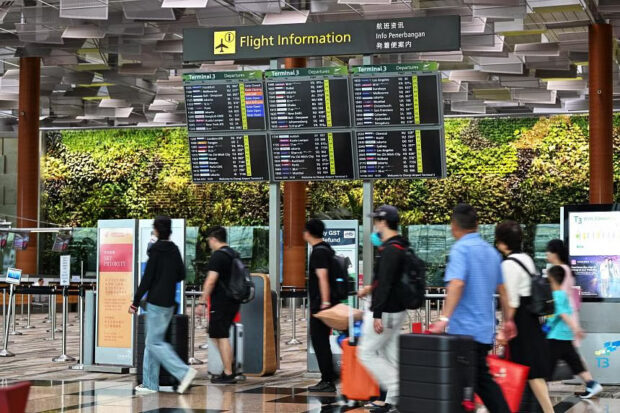Singapore core inflation sticks at 3.1% in May

Services inflation in May came in at 3.6 per cent on the back of a larger increase in holiday expenses and a smaller decline in prices of airfares. ST PHOTO: CHONG JUN LIANG
SINGAPORE — Core inflation in Singapore stayed the same for three months in a row through May, when Singaporeans paid more for their holiday trips.
Although consumer prices appear sticky, analysts believe inflation is on track to ease.
Official data released on June 24 showed that core inflation, which excludes private transport and accommodation costs to better reflect the expenses of households here, remained at 3.1 per cent year on year in May – unchanged from April and March.
READ: Singapore economic growth missed forecasts in first quarter
Services inflation in May came in at 3.6 per cent on the back of a larger increase in holiday expenses and a smaller decline in prices of airfares.
Article continues after this advertisementThe rise in services inflation was offset by lower inflation for electricity and gas, retail and other goods.
Article continues after this advertisementFood inflation was unchanged at 2.8 per cent.
Overall or headline inflation in May rose to 3.1 per cent year on year from 2.7 per cent in April, led by a jump in prices of vehicles and petrol.
Inflation rose the most for private transport, where costs increased 2.8 per cent year on year in May, due to pricier cars and motorcycles, as well as petrol prices going up at a faster pace. It was up 0.3 per cent in April.
Both inflation measures came in slightly higher than forecast. A Reuters poll of economists tipped core inflation at 3 per cent and headline inflation at 3.05 per cent.
On a month-on-month basis, which represents how much momentum there still is in prices, core inflation edged up 0.1 per cent in May, while headline inflation went up by 0.7 per cent.
READ: Singapore keeps monetary policy unchanged as inflation slows
DBS economist Chua Han Teng said core disinflation, or the reduction in the rate of core inflation, is still on track.
Despite year-on-year core inflation remaining steady, the month-on-month annualized change on a three-month moving average basis trended lower in May than the February 2024 peak, he said.
Chua expects average core inflation to cool in 2024 as imported price pressures are contained due to manageable global commodity prices, and with the Singapore dollar staying strong.
OCBC Bank chief economist Selena Ling said that at this juncture, the last-mile disinflation trajectory remains somewhat bumpy, but it is not unique to Singapore.
She said there is room for both core and headline inflation to go below the 3 per cent level in the coming months to average around 2.8 per cent and 3 per cent for 2024.
Central banks around the world are keeping a close watch on inflation.
The European Central Bank and Swiss National Bank have started to cut their policy rates, the Bank of England is sending dovish signals, while the United States Federal Reserve is in a wait-and-see mode but has pencilled in one cut in 2024, with four tentative cuts each in 2025 and 2026.
Said Ling: “For the Monetary Authority of Singapore (MAS), the bar to a further monetary policy tightening is relatively high, while the time for an easing may also be some time away given the downward sticky core inflation prints. Our baseline view is no change to MAS’ monetary policy stance for the July meeting and the October meeting as well.”
The Ministry of Trade and Industry (MTI) and MAS said on June 24 that core inflation is expected to stay on a gradual moderating trend over the rest of the year and step down more discernibly in the fourth quarter.
They maintained their estimates for both core and overall inflation in 2024 at 2.5 per cent to 3.5 per cent.
“Inflation for services associated with overseas travel has remained firm but should moderate further over the course of the year as the air transport and hospitality sectors around the world gradually restore supply,” the statement said.
Both MTI and MAS added that the gradually strengthening Singdollar trade-weighted exchange rate should continue to temper Singapore’s imported inflation in the months ahead.